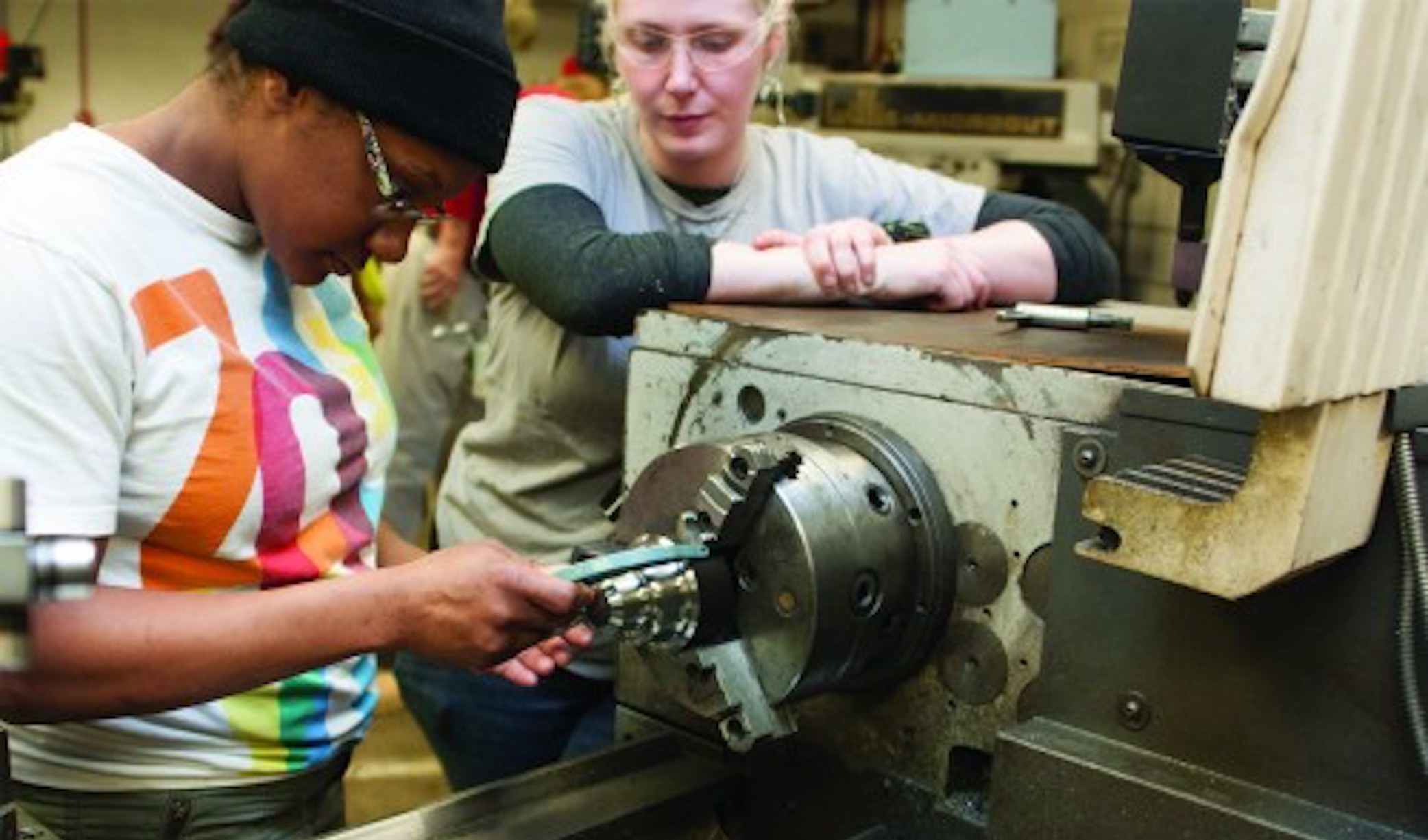Last week was National Apprenticeship Week – a week to celebrate the power of apprenticeships to offer good jobs and family-supporting wages. Apprenticeships are ‘earn-as-you-learn’ opportunities that combine paid employment with on-the-job training and classroom instruction. Women apprentices can support themselves and their families while acquiring relevant work experience and industry-recognized credentials, all without getting saddled with the college debt associated with a 4-year degree.
Despite these benefits, fewer than one in ten apprentices are women.
Women’s underrepresentation in apprenticeships is even more pronounced in the construction trades. Two thirds of all apprentices in federally registered apprenticeship programs are in the construction trades. Workers who completed apprenticeships in these fields have higher earnings than in other apprentice-able occupations. In Illinois, the starting wage for a first year union plumbing apprentice was $17.35, compared to an average of just $9.36 for waiters and waitresses in 2019. Yet, women are still just 3.6 percent of federally registered construction trades apprentices (IWPR analysis of RAPIDS data).
The need to improve women’s access to these good jobs has been recognized by the federal government since the early 1990s, through WANTO grants.
The COVID crisis has shown how important it is to push for high quality job opportunities for women, as women’s unemployment has skyrocketed and many who remain at work are in female-dominated jobs with low wages and no benefits.
Some regions and apprenticeship programs are doing much better with attracting and retaining women. With the help of pre-apprenticeships for women like ANEW in Seattle, Nontraditional Employment for Women (NEW) in New York, Oregon Tradeswomen (OTW), Chicago Women in the Trades (CWIT), West Virginia Women Work (WVWW), Tradeswomen Inc (TWI), and Women in Construction (WinC); child care and other supports targeted at working in the trades; union initiatives on pregnancy on maternity leave; and a focus on target setting and monitoring on large projects—women have reached 11 percent of apprentices in New York City, 9.2 percent in Massachusetts, 7.5 percent in Oregon, 5.5 percent in West Virginia, 4.1 percent in Illinois, and double digit representation in individual apprenticeship programs.
These are great models for improving women’s economic security and rebuilding a skilled workforce, particularly as nation is preparing for investment in roads, bridges, and green infrastructure.


